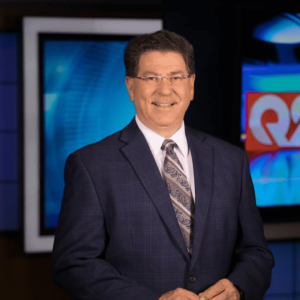Billings voters face an important decision over the next few weeks, as they decide the fate of the city's public safety mill levy.
The proposed levy would revamp how the city pays for the rising cost of police, fire, and 911 services, and repeals a 16-year-old levy that no longer covers the bills.
The levy's passage or failure will have a significant impact on public safety in Montana's largest city for years to come, say the city's top public-safety officials.
"Pre-COVID, we had plans to grow the department," said Billings Police Chief Rich St. John. "We had three of four strategies to get after violent crime and the downtown homeless situation, but it's a different financial landscape now."
As a result, St. John said the decision was made just not to go backward.
"So that's what the ask is. We're not adding anybody, we're not adding anything," St. John said.
Not adding anything could prove tough on a police department that's now on pace to respond to a record number of calls this year.
"We had about 95,000 last year, we're on pace to 100,000 this year, so we're busy," said St. John. "If we lose ground, the criminal element hates a vacuum. If we arrest somebody, someone else will move in there, but that also holds true for police. If we end up having to pull resources back, somebody is going to fill that void."
The proposed public safety levy would raise 60 mills worth of local property taxes, $12.2 million this year, money that would be shared by the police and fire departments. It amounts to $4 million more than the 2004 levy raises that are still in place.
"We see the increase in calls," said Billings Fire Chief Bill Rash. "Billings PD was talking 95 to 100, we're 17,000 on track for 18,000 calls for service, so this levy is just maintaining."
Much like his police counterpart, Rash was also planning to expand his department's footprint across Billings. A 2018 study presented to the City Council indicated the city was already short two fire stations from where it should be.
"Our response times are literally twice what the national standard is- twice," said Rash. "That's important, when you're talking CPR's, getting to fires before they get out of control. That's a huge thing."
Emergency response times are among the factors that have a direct impact on home insurance rates.
"We're assuming we can get there within four minutes," said Rash. "That's the goal and the standard.
"But if you've got one truck out of one area, another engine has to come in to cover other calls. You can see the domino effect that we experience, and therefore everyone's response time is delayed."
Another factor in the rising cost of public safety, the variety of demands on today's fire department, everything from Rims rescues, to emergency medical response, to hazardous material spills.
"We are set up to get there quickly," explained Rash. "Being able to get their quick with the right materials, the right equipment and training , then we can save lives."
Will Billings voters bite the bullet in the name of public safety, even amid a pandemic? We'll find out three weeks from Tuesday.
Editor's Note: Yellowstone County is mailing out 60,000 ballots for the Public Safety Mill Levy election on Friday. Voters have until Sept. 15, 2020 to return voted ballots to the Yellowstone County Elections Office.
Related: Billings city leaders continue push for public safety levy




